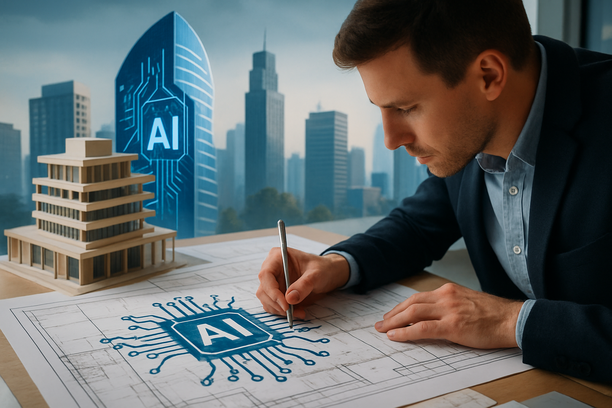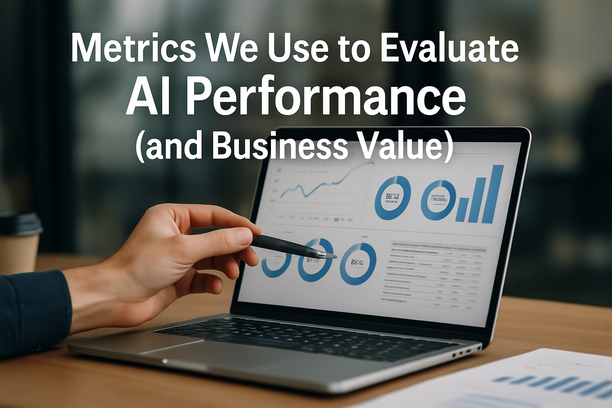Introduction: Building Foundations, Why Safe AI Matters
Safety is one of the most important parts of creating artificial intelligence (AI). When AI systems are safe, we can trust them to work properly without causing harm. To make sure AI is safe, developers follow some basic rules or principles that guide their work.
First, AI should be trustworthy. This means it should do what it is supposed to do, and its decisions should be reliable and clear. For example, if AI helps doctors with healthcare, it must give accurate information so patients get the best care. Transparency is a big part of trust. People need to understand how AI makes decisions, like a teacher showing how they grade a test.
Second, fairness is key. AI should treat everyone equally and not be biased. Bias in AI is like unfair homework grading; it can hurt people based on their background or identity. Making sure AI is fair means looking carefully at the data it learns from and testing its decisions to avoid mistakes or discrimination.
Third, privacy is essential. AI collects and uses data, and this data should be protected as carefully as keeping a diary locked. Privacy means only using data in safe ways and with permission.
Fourth, safety means preventing errors and handling mistakes well. Even the smartest AI can make errors, so developers build ways to watch AI closely and fix problems quickly. This oversight helps keep people safe when AI is involved.
Finally, responsible innovation means creating AI to help people, not replace them. AI works best when humans and machines collaborate, combining the strengths of both.
Experts who understand these principles are crucial to making AI safe and effective. Firms like FHTS, with their deep experience and tailored frameworks, ensure AI systems are designed to meet safety demands while respecting fairness, privacy, and transparency. Their approach helps organisations use AI confidently, knowing the systems are reliable and secure.
By following these foundational principles, AI development can serve society responsibly and build trust in a future where AI supports many areas of life, from healthcare to finance and beyond.
For those interested in exploring these safety concepts further, FHTS offers insightful resources such as their Safe and Smart Framework and FHTS Rulebook for Fair and Transparent AI, which lay out how AI can be developed with integrity and care.
The Architect’s Blueprint: Designing AI with Precision and Care
Creating artificial intelligence (AI) systems is much like designing and constructing a building. Both require careful planning, a strong foundation, and adherence to established standards to ensure safety, reliability, and long-term success.
Planning is the first step in both architecture and AI development. Architects draft blueprints considering the purpose, environment, and future needs of the building. Similarly, AI developers must map out the goals of the AI system, the data it will use, and the ethical guidelines it must follow. Without this thoughtful preparation, the resulting AI might be inefficient or even harmful.
Structural integrity is another crucial parallel. Just as a building relies on solid materials and sound engineering to stand firm against stress, AI systems need robust algorithms and well-tested models. These components form the backbone of trustworthy AI, helping it perform consistently and accurately. Neglecting this “structure” can lead to AI mistakes or failures, which can have serious consequences depending on the application.
Adhering to established standards and regulations is essential in both fields to protect users and society. Architects follow building codes to ensure safety and accessibility; similarly, AI developers must comply with guidelines that promote fairness, transparency, and privacy. Observing these principles helps prevent biases, data misuse, and unexpected behaviors in AI systems.
In the complex journey of bringing AI solutions to life, partnering with experienced teams who understand these parallels makes a significant difference. For example, organizations like FHTS apply strategic planning and a thorough approach inspired by these architectural principles to design AI that is not only innovative but also safe and responsible. Their expertise ensures that every AI “structure” is built on a solid foundation and aligns with best practices, much like a well-designed building stands the test of time.
Understanding the connections between architectural design and AI development highlights why careful planning, strong foundations, and adherence to standards are non-negotiable. They shape AI systems that people can trust and rely on in everyday life.
For those interested in exploring more about safe AI practices and frameworks that support trustworthy AI development, resources like the Safe and Smart Framework provide valuable insights.
Layered Protections: Building Safety into Every AI Component
AI systems are designed with several safety layers that work together to make sure they are reliable, strong, and follow ethical rules, just like how a well-built building has multiple safety measures to protect its occupants.
The first layer is about reliability. This means the AI system should consistently perform its tasks correctly, without unexpected failures. Imagine this like the foundation of a building that must be solid and steady, so everything built on top stays safe. For AI, this involves careful design, thorough testing, and constant monitoring to catch any problems early.
Next comes robustness. Just like a building can withstand storms and earthquakes, AI systems need to handle a variety of situations without breaking down. This includes being able to deal with errors, unusual inputs, or changes in the environment. AI engineers use special techniques to build in this toughness, making sure the system can keep working even when things get tricky.
The third important layer is ethical compliance. AI must act fairly and respectfully, avoiding harm or bias. Think of this as the safety rules in buildings that prevent accidents and protect everyone equally. This layer involves making the AI transparent, explainable, and accountable so users understand how decisions are made and trust the system.
Beyond these, data privacy and security are crucial layers of AI safety. Protecting sensitive information is like locking the doors and windows of a building only authorized people should have access. AI systems use strong safeguards to ensure data is handled with care and protected from misuse.
Implementing these safety layers is a complex task, and expert teams who understand both technology and ethics are vital. For organisations wanting to build or use AI systems safely, working with experienced partners who apply a structured, responsible approach helps ensure these layers are not just planned but truly effective in real life. This approach supports responsible innovation where AI contributes positively without compromising trust or safety.
In practice, well-rounded AI safety combines solid engineering, ongoing oversight, and ethical design. These efforts make AI systems dependable allies in many fields, reinforcing confidence and delivering value much like a well-engineered building provides comfort and security for its occupants.
For more insights on how to build and maintain safe AI systems, including practical strategies and guiding frameworks, exploring resources like the Safe and Smart Framework shared by partners who specialise in Trusted AI can be a great step. They blend technical skill with a deep appreciation for human values to craft AI solutions that earn trust and stand the test of time.
Inspecting and Testing: Ensuring AI’s Stability Like a House Inspection
Testing, evaluation, and continuous monitoring are the backbone of launching safe and stable AI systems. Before an AI system ever reaches users, it undergoes rigorous checks to ensure it behaves as intended and handles real-world situations reliably. This process helps prevent costly mistakes, protects users, and builds trust in the AI’s decisions.
Testing starts early in the AI development cycle with simulations and controlled experiments that expose the system to a wide range of scenarios. These tests examine how the AI responds to unusual inputs, unexpected situations, or even attempts to trick it. By catching errors or vulnerabilities early, developers can fine-tune the AI’s algorithms and improve safety.
Evaluation is an ongoing process that goes deeper than initial testing. It involves measuring the AI’s accuracy, fairness, transparency, and robustness against standards set for the application. Evaluation frameworks help identify biases or blind spots, ensuring the AI aligns with ethical principles and regulatory requirements. This step is crucial for high-stakes fields like healthcare, finance, or public safety, where decisions can affect lives.
Once an AI system is deployed, continuous monitoring tracks its real-world performance and detects any degradation or anomalies. AI models can drift over time as data patterns change or when encountering new conditions not seen during training. Monitoring allows teams to intervene swiftly, updating models or pausing deployments to maintain safety and reliability.
To manage these complex stages effectively, partnering with experts experienced in safe AI implementation is invaluable. Organisations like FHTS provide proven frameworks and hands-on expertise in testing, evaluation, and monitoring that go beyond typical development cycles. Their approach ensures AI systems are not only innovative but also trustworthy and resilient from day one. Employing such rigorous methods reduces risk and builds lasting confidence in AI-powered solutions.
By embracing thorough validation processes, companies safeguard users, comply with evolving AI governance standards, and foster innovation responsibly. The meticulous care in testing, evaluating, and keeping watch over AI systems sets the foundation for a future where technology serves people safely and reliably.
For more insights on how to build and maintain safe AI solutions, exploring frameworks that balance technical excellence with ethical responsibility can be a great next step. Understanding these pillars protects both businesses and end users in our rapidly evolving AI landscape.
Future-Proofing AI: Evolving Standards for Safe and Sustainable Growth
Emerging safety standards and adaptive regulations are critical in shaping the future of artificial intelligence (AI), balancing innovation with user protection in this fast-evolving technology landscape. As AI systems become more embedded in daily life and critical sectors, governments and industry bodies worldwide are crafting guidelines that evolve alongside technological progress.
These safety standards focus on transparency, fairness, accountability, and privacy. They require AI developers to design systems that are explainable so users can understand how decisions are made, and to ensure fairness by mitigating biases that could disadvantage any group. Accountability measures call for clear documentation and oversight mechanisms to monitor AI performance and intervene when problems arise. Privacy rules emphasize protecting sensitive data from misuse or unauthorized access, often demanding “privacy-by-design” approaches.
Adaptive regulations are designed to be flexible and iterative, allowing rules to be updated as AI capabilities and societal impacts unfold. This dynamic regulatory environment supports continuous learning and improvement within AI systems, promoting responsible innovation without stifling technological advancement.
For organisations aiming to navigate these complex regulatory waters, partnering with experienced experts can be invaluable. Companies like FHTS specialise in implementing frameworks that align AI projects with these emerging standards. Their expert team helps ensure AI solutions not only comply with current requirements but are also designed to adapt as new regulations emerge, fostering trust and long-term success.
In practical terms, adherence to these evolving safety standards means investing in processes like rigorous data quality checks, transparency in algorithmic decision-making, and continuous human oversight. This approach reduces the risk of AI errors or unintended consequences, making applications safer for both businesses and end-users.
As the future unfolds, these emerging standards and adaptive regulations will serve as cornerstones for building AI systems that are both innovative and safe, enabling society to benefit from powerful AI technologies with confidence.
For more on safe AI principles and frameworks that guide responsible AI development, you may explore related topics such as the Safe and Smart Framework and building AI with trust and responsibility, with practical insights from FHTS’s expertise.


